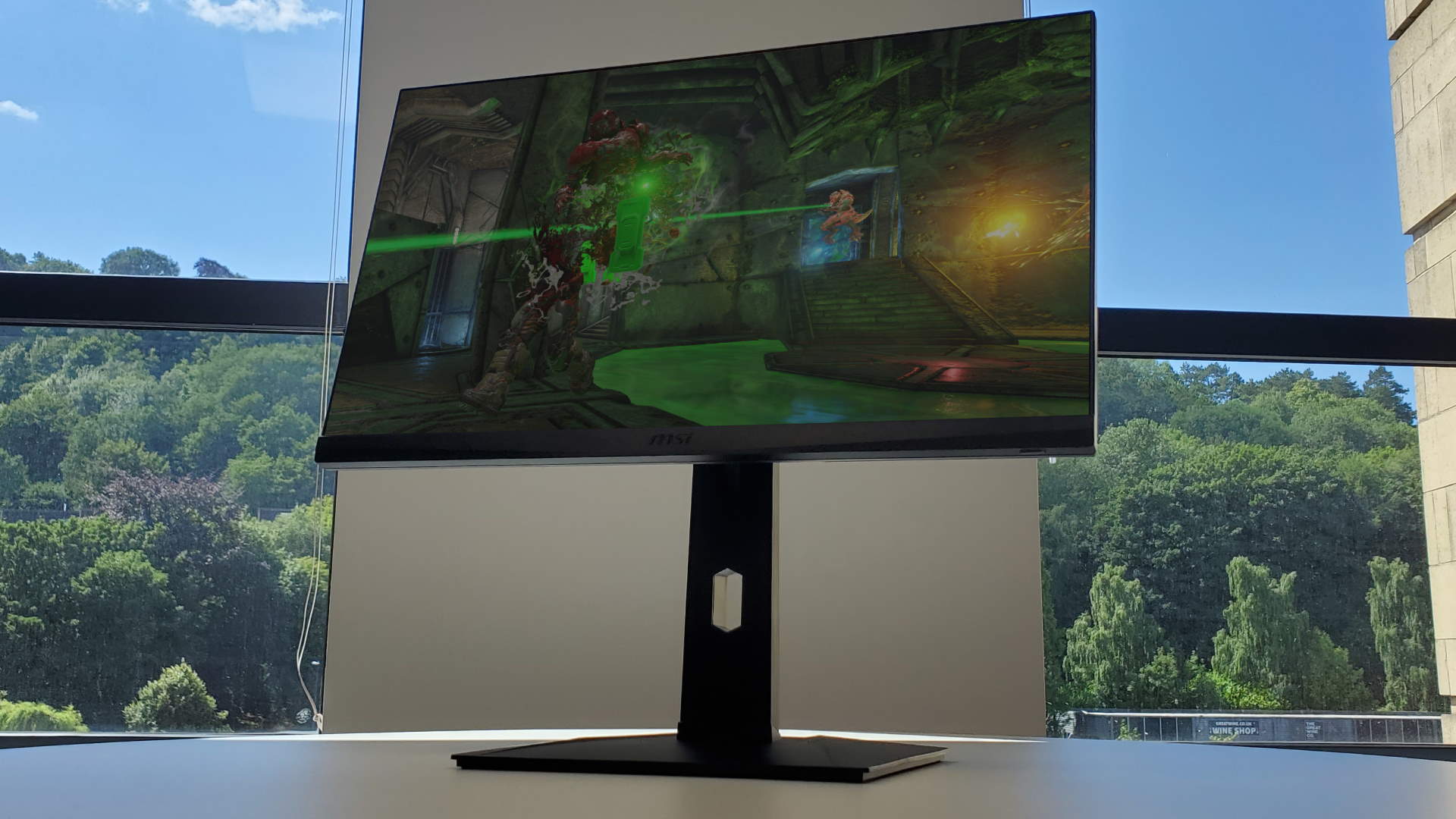Our Verdict
It's a lot of money for the resolution and screen size, but the refresh rate and extras balance the equation.
For
- esports-tier refresh speed
- Neat IPS colours
- Some handy bonus features
Against
- A lot of money for 1080p
- Basic bezel and stand
- Still feels like a tradeoff
PC Gamer's got your back
Refresh rate, resolution, black levels, panel size: pick two. That's been the PC monitor buyer's dilemma for several years now, since we collectively realised that yes, playing at a higher refresh rate does actually make you better at Counter-Strike. MSI's latest panel, bearing the catchy moniker Oculux NXG253R, aims to at least address the most common tradeoff in modern gaming panels: refresh rate for colour quality.
Whereas the majority of high refresh rate panels are VA or TN screens with limited viewing angle and shallow colours, MSI's latest is built around an IPS panel, with all the inky blacks and rich colours that technology brings with it. Traditionally IPS has been slower to the party since it's costlier to manufacture high refresh rate panels, but evidently enough of us are sold on 120Hz and beyond.
Way beyond, in fact. This is the first 360Hz monitor I've played on, and I must admit to being sceptical about whatever marginal gains I might see in performance. 60Hz to 120Hz is transformative, but 120Hz to 360Hz? Surely one's gaming performance doesn't increase exponentially. And don't eyes only see 60 fps anyway?
It turns out that while that performance gain might not exist on a linear curve, 360Hz does look and feel smoother than 120Hz, and the decreased ghosting of any targets in your shooter of choice does make them that bit easier to connect with. If your aspirations for online competition are pretty serious, that's really all you need to know.
At enthusiast level, there's still just a sense of pure enjoyment in watching Overwatch or Quake Champions zip along. Anecdotally, I found D.Va's out-of-suit pistol combat that bit easier with frames and refresh rate way up at 300 (the game's capped there) since my targets were always where my screen told me they were. In similarly frenetic Quake Champions matches, I pulled off Ranger's tricky teleport kill with a bit more ease, too. (I can attest to that, having witnessed Phil actually doing it in a match -Ed.)
Assetto Corsa Competizione definitely benefits from the Oculux's higher numbers, although good luck getting it to run at a stable 300+ fps even at 1080p. And I was running on an RTX 3080, too. Not the monitor's fault, of course, but something to bear in mind: you still need the GPU to get your frame rate up there in the hundreds in order to feel the benefit of that 360Hz refresh.
This being an IPS panel with typically darker blacks, it definitely looks more vivid in-game than even a good TN screen, and the colours hold up at any viewing angle. You've got a few preset brightness and color balance modes to cycle between on the OSD, arranged by genre. FPS is super-bright and saturated, racing is a bit more subdued by contrast. Out of the box, the default colour and brightness settings are easy on the eye and really sell the IPS benefit.
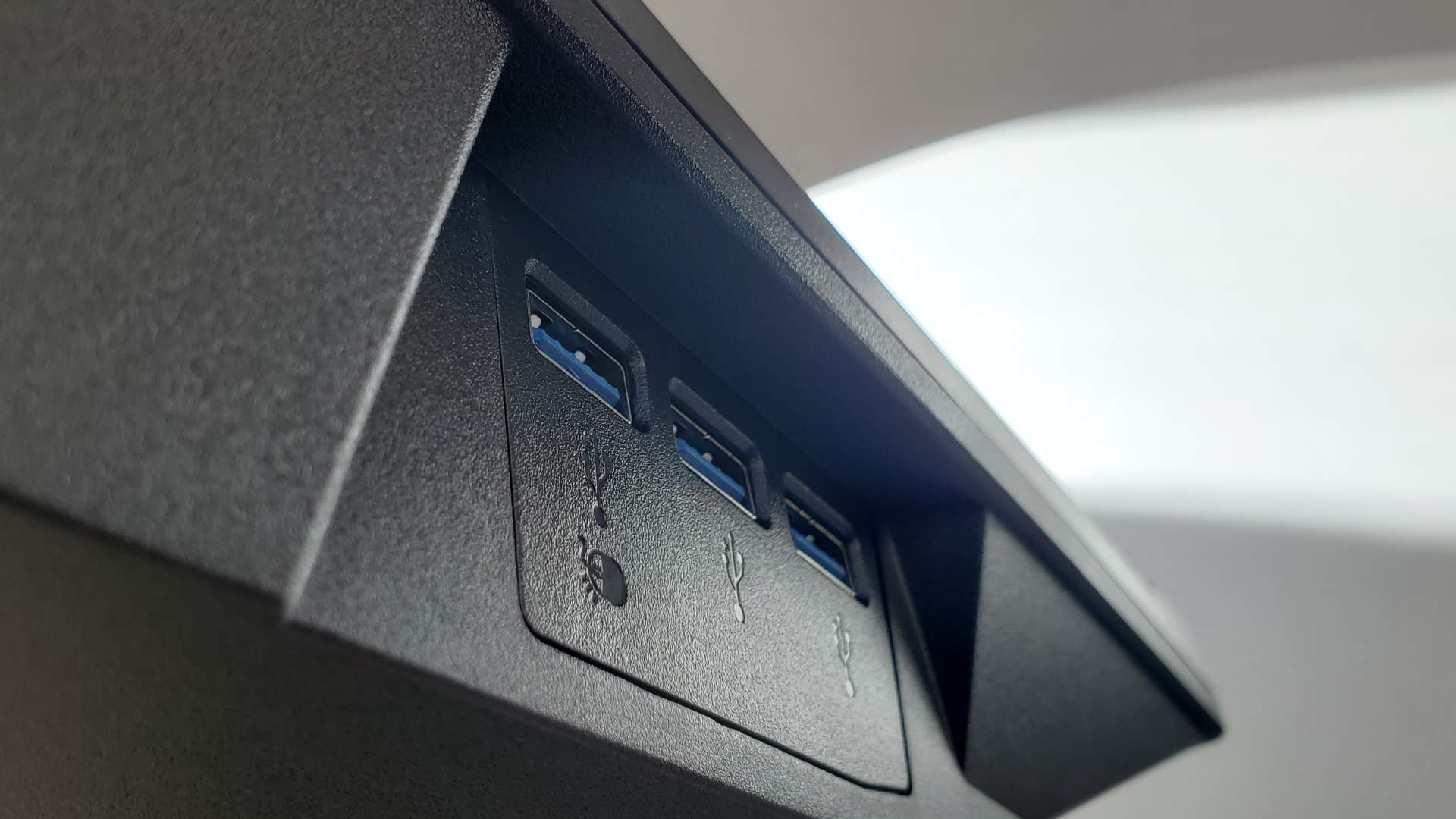
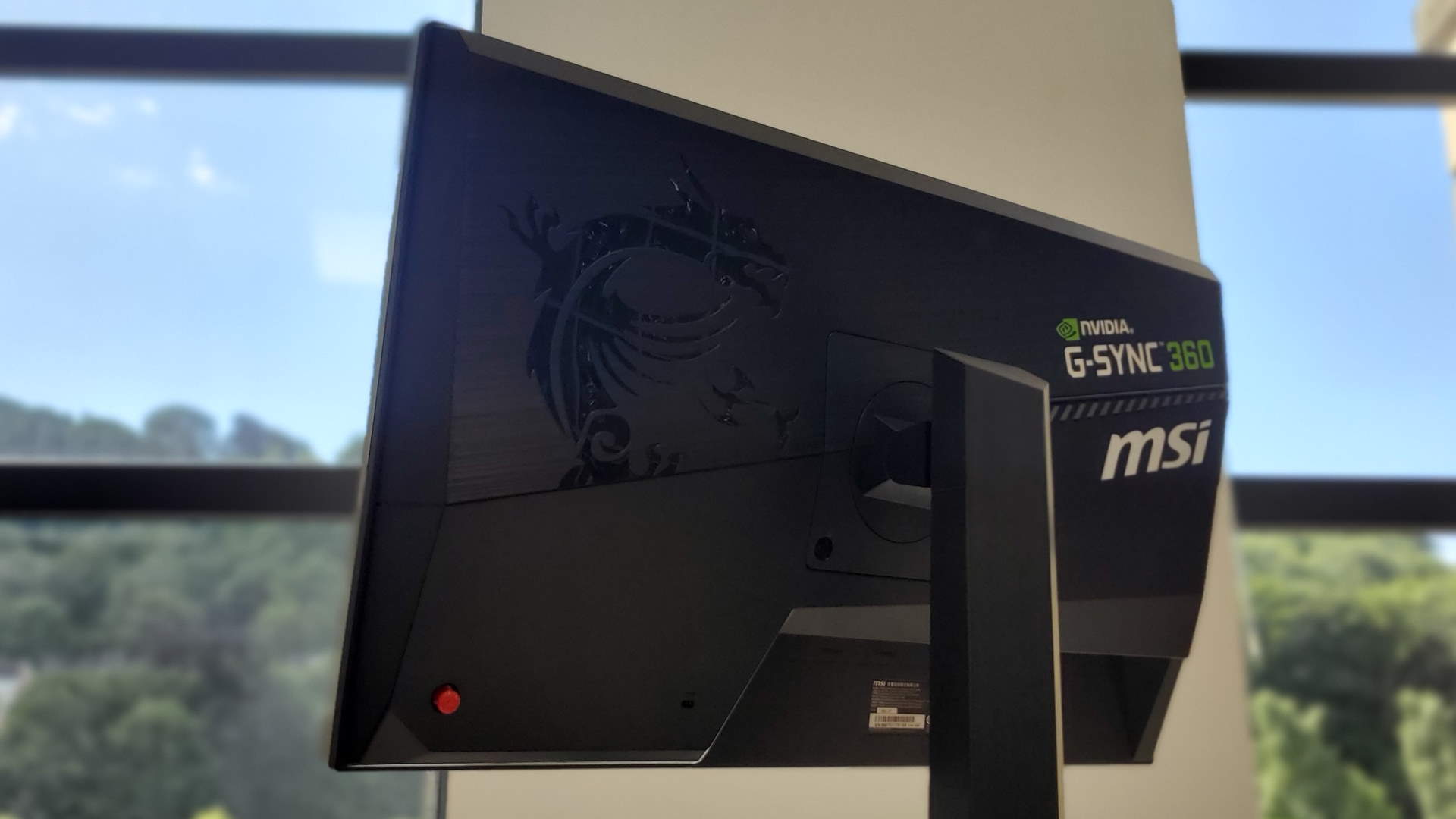
Those dark blacks aren't always useful in a competitive gaming environment, however. We all know how those sneaky Ts like to hang around the shadows under palace in Mirage, and in those instances you don't want you monitor colluding with them. As such, this panel's got G-Sync Esports Mode ready on the OSD to absolutely nuke the colour balance. In a good way. Switching it on turns the darkest areas of a scene into saturated greys that really show up anyone hiding in them. It looks horrendous visually, of course, but that's not the point. Just remember to turn it off again before playing anything whose graphics you'd like to actually enjoy.
G-Sync itself is present here too, and although that won't be a big deal to competitive players due to the miniscule latency increase it adds to the signal chain, for the rest of us dropping $400 (£499) on a 1080p monitor, it sweetens the deal. Whether or not it actually feels smoother than 300+ fps of non-vsynced gameplay is really in the eye of the beholder, but it has always been, and remains, a useful tool in one's armoury for those slower games, the Fallout 4s and Cyberpunks, who need all the help they can get to smooth it all out.
Finally, one of the three USB ports on the monitor itself is Nvidia Reflex-ready, meaning you can monitor total system latency directly on your monitor if you want. It's a convenient way to check everything's working the way you'd expect it to and to highlight any drops mid-game. Not one to keep on all the time, though, for your sanity's sake.
The Oculux NXG253R's mandate is sound, then, but there are still compromises made in this pricey 1080p monitor in order to optimise esports performance. The most obvious are the screen size and resolution, 24.5-inch and 1080p respectively. You could certainly argue that nobody's getting 360 fps at 4K in… well, anything outside of CS:GO or MOBAs, and quite rightly so. But spending this much on a monitor that won't even give you 1440p feels like a serious tradeoff, and that resolution dictates a smaller panel size. Nobody wants to see the individual pixels at 1080p on a 32-inch screen.
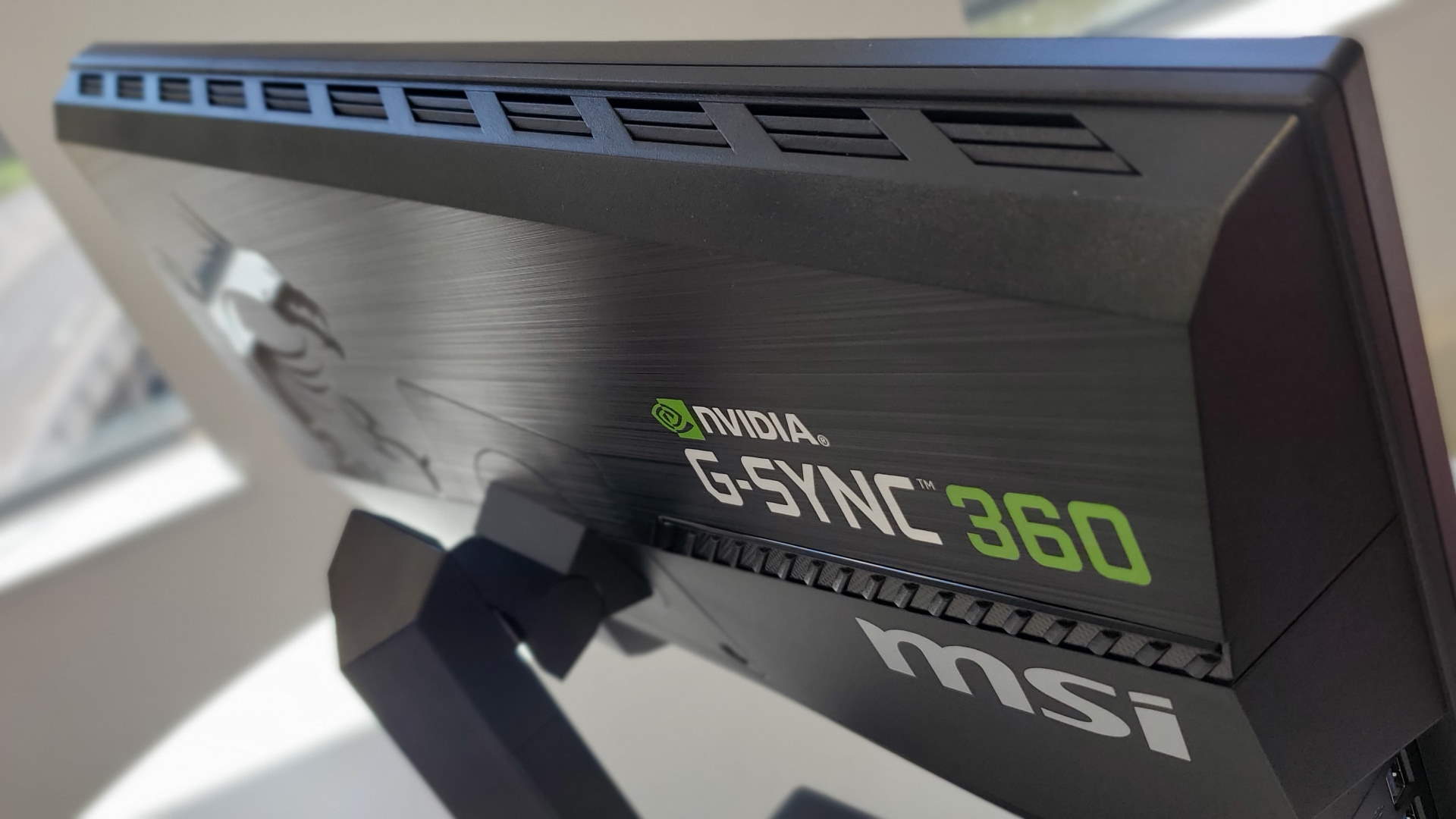
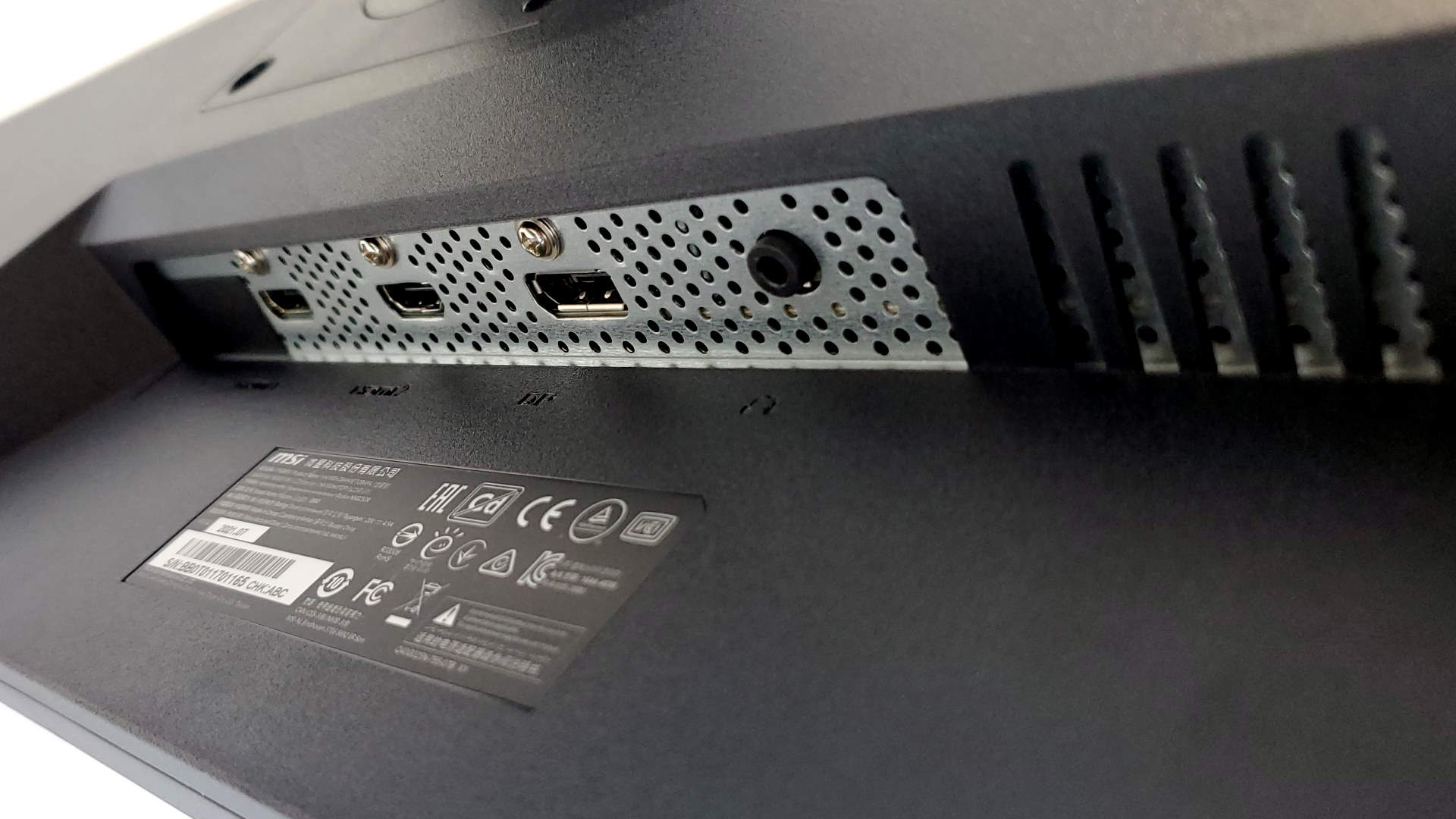
MSI's bezel and stand design aren't working particularly hard to wow you, either. It's impressively adjustable and can be oriented to full vertical should you ever need it, but the plastic finishes and slightly old-fashioned 'gAm3r' aesthetic don't convey the price point it's pitched at.
Anybody buying a monitor right now faces the same dilemma, then, one which the Oculux NXG253R only partially addresses. That magic combination of screen size, resolution, refresh rate and lighting technology is still out of reach for the masses, but at least with MSI's latest you can enjoy the benefits of a high refresh rate to the furthest extreme the technology allows—Asus' 500Hz panel notwithstanding.
There's a real performance benefit here, and a sheer enjoyment multiplier. You just have to make peace with the idea of buying into a piece of specialist equipment, not an all-rounder.
It's a lot of money for the resolution and screen size, but the refresh rate and extras balance the equation.
Phil 'the face' Iwaniuk used to work in magazines. Now he wanders the earth, stopping passers-by to tell them about PC games he remembers from 1998 until their polite smiles turn cold. He also makes ads. Veteran hardware smasher and game botherer of PC Format, Official PlayStation Magazine, PCGamesN, Guardian, Eurogamer, IGN, VG247, and What Gramophone? He won an award once, but he doesn't like to go on about it.
You can get rid of 'the face' bit if you like.
No -Ed.
